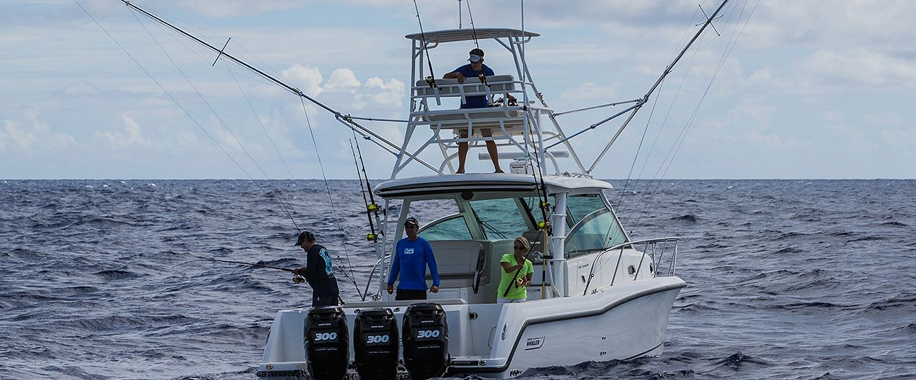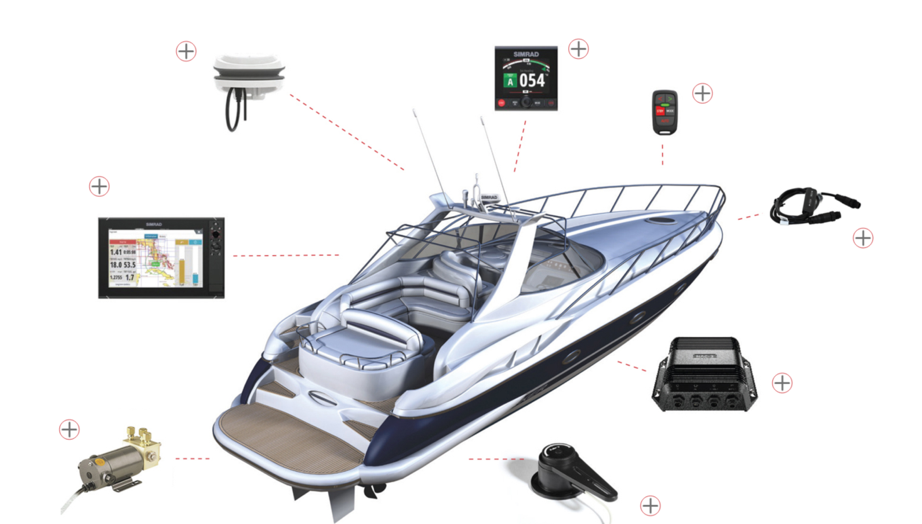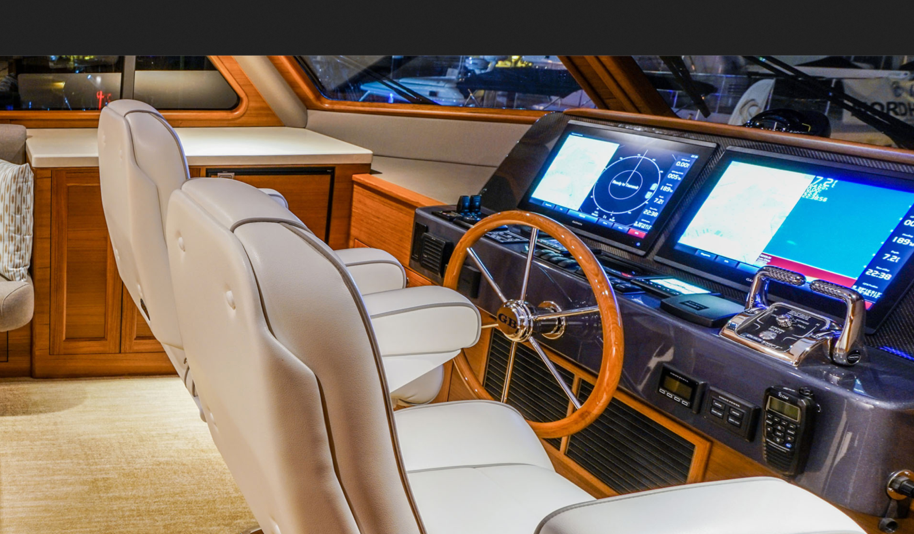Why You Need an Autopilot, Part 1

“Putting it on autopilot” has long been synonymous for leaning back and letting things take their own course — and there’s a reason for that. Autopilots are useful electronic tools that make boating more relaxing, more efficient, and more fun. Many who complete their first cruise after one is installed wonder how they got along without it.
Particularly if you make long runs or passages offshore and don’t have an autopilot on your boat, you probably should. The odds are that you’re wasting fuel on long runs without an autopilot.
The autopilot system interfaces with its heading sensor and your GPS homes in on your course and sticks to it more closely than most of us can manage, particularly when out of sight of land. You’ll travel the most direct route to your destination and burn the least fuel with an autopilot handling the course. You’ll also arrive less fatigued than if you have been handling the helm for hours.

You can set waypoints simply by tapping where you want to go on a touch-screen MFD and your autopilot will take you there. Or simply tap or dial in a heading on a dedicated controller. No matter how the wind and current push the boat, up to the limits of the autopilot’s power system she will run true to the heading.
As the boat nears the mark, the system will alert you with beeps and flashes that it’s about to arrive and perhaps to change course if you have more waypoints set after this one.
For those who boat short-handed, an autopilot is a must.

If you’re trolling offshore, the autopilot can handle the helm while you step away to assist with setting the lines or handling a fish. It can also troll preset patterns that keep you on a school of fish or bait or work around a structure located on sonar.
Still, someone must keep a watch ahead at all times during this or any operation on autopilot.
Need to navigate around an unexpected obstruction? “Dodge” functionality lets you do so without disengaging the autopilot. Once you’ve avoided the obstacle, the autopilot will bring you back to your original course.
On most systems, if you punch in a GoTo that requires a sharp turn, the system may require repeat confirmations before it makes the turn — a safety feature.
Many autopilot systems can be set to troll circles, squares, figure 8s and other patterns repeatedly. Set the distance between spirals or corners of the square, useful when scanning for fish in a lawn-mower pattern. Offshore anglers have found them a must-have in recent years.
Easing the Ride
Some systems with added sensors can also steer in a way that reduces the rolling motion by reading a quartering sea and adjusting for a significantly more comfortable ride, primarily in sailboats.
In short there are many advantages to having this extra set of intelligent hands aboard.

How Autopilots Work
All autopilots include three main components: a heading sensor that is usually a fluxgate compass, a central processing unit or actuator control unit that is the “brain” of the autopilot and a drive unit, a motor or hydraulic pump that applies force to your boat’s rudder.

The heading sensor is used rather than a link to GPS because the sensor provides the direction that the boat’s bow is pointed at any time relative to the magnetic north pole or geographic North Pole.
A GPS receiver provides position (latitude and longitude), COG and SOG (speed over ground). COG and SOG are measurements related to solid ground. When the boat slows, the GPS has trouble determining COG with any accuracy. The fluxgate compass provides better directional accuracy in this case. It employs two or more small coils of wire around a core of highly permeable magnetic material, to directly sense the direction of the horizontal component of the earth’s magnetic field.

Actuator control units come in several sizes from most companies with more electrical power for larger, heavier boats.
Buy one with plenty of capacity for your boat — though this component is compact and hidden below decks, if you buy one that’s undersized for your steering system and the weight of your boat, the autopilot won’t perform well in anything besides calm seas.
More complicated autopilots connect to additional sensors: data sources may include a masthead wind vane for sailboats; a rudder sensor that tells the pilot’s processor where your rudder is pointed; a rate gyro that keeps track of momentary yaw and pitch movements and a GPS receiver or a speedometer.
The drive mechanisms matched with your boat’s type of steering vary the most from one autopilot to another.

Hydraulic systems, the most common for powerboats, include a reversible electric motor attached to a hydraulic pump with three fittings, port, starboard and return. This is fitted into your hydraulic steering system.
The actuator control unit commands the motor to drive in one direction or the other, turning port or starboard. The drive pumps must be matched to the size of your boat’s hydraulic-steering cylinder to function effectively. Too large and reaction will be too fast, too small and it will be sluggish.
Wheel pilots, circular systems that clamp to the wheel, are popular for sailboats, where a geared electric motor turns the wheel right or left via a drive belt — simple to install and practical.
Rotary drives are electric mechanical drives for boats with cable steering.

Linear drive is a mechanical version of the hydraulic cylinder that pushes and pulls on the rudder stock on sailboats with an extending and retracting arm.
Some small self-contained autopilots include all three elements in a single unit that lives in the cockpit of small sailboats or on tiller-outboard boats. Raymarine’s is plug and play and can be unplugged and stored in dry storage when not needed.

We’ve reviewed the basics of autopilot components and function here, and will cover choosing a system to best suit your boat in Part 2.